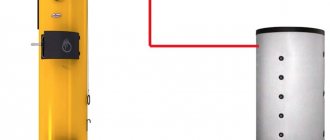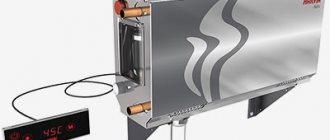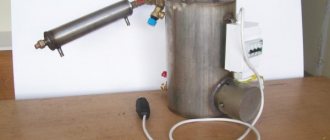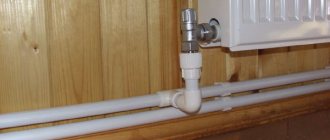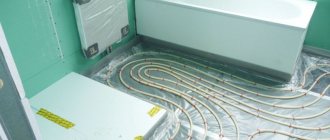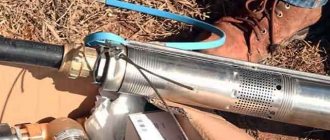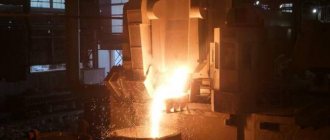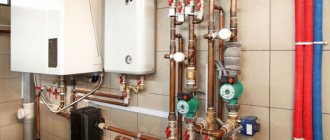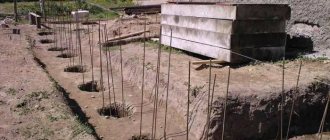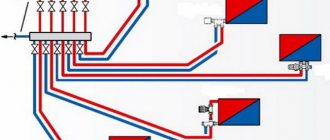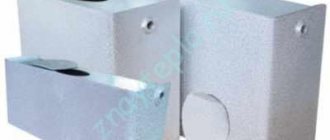Why do you need a smoke tooth in a grill or barbecue oven? We reveal the secrets of stove makers
If you are planning to install a grill or barbecue at your dacha or on your property, then in addition to bricks and strong hands, you need to take into account the subtleties when organizing construction. Proper air circulation, natural draft and maximum temperature inside will help you quickly and tasty prepare your favorite dish. We will talk about all the intricacies of the process, and also try to reveal as much as possible such a concept as a smoke tooth: what is it for, how to lay it out correctly and how to ensure natural draft.
What is a tooth?
The tooth is a special design that creates the correct traction. It is called a tooth because it vaguely resembles this object, but only remotely. It's a slightly sloping ledge. Thanks to him, the smoke does not enter the room, but goes up.
Benefits of use
- makes the flue gases coming to the surface not hot, but warm;
- provides better traction;
- prevents cold air from entering the firebox,
- prevents soot from falling into the firebox.
Interestingly, in the past the tooth was traditionally located at the back wall. But now they do it in front and even in the middle. Its work is carried out partly due to the fact that it slightly blocks the chimney. As a result, the air in it does not flow quite straight, which is what is needed to mix hot and cold flows.
Why is it needed?
Many people are concerned about the question of why a tooth is needed and whether it is needed at all, since there are doubts about its effectiveness, and craftsmen are always coming up with ways to improve traction without its participation. As for effectiveness, research confirms it (for example, the study of Professor Rozin). According to him, the speed of air movement increases with the presence of a tooth, and also smoke is less likely to escape from the opening.
ATTENTION. Some, in order not to make a tooth, simply reduce the opening. Yes, this helps normalize traction and additional design features become unnecessary. But at the same time, heat transfer is reduced, and for the same efficiency as in a conventional barbecue, you will need to spend more fuel. The appearance of the structure also deteriorates, but the aesthetic component also matters.
An important evidence in favor of the tooth is that famous companies that produce ready-made structures often provide for its presence. At the same time, it often turns out to be modified and modernized. Stove makers also rely on their own experience, which suggests that smoke emissions into the room are significantly reduced with the presence of this structural part.
Where is it used
In a brick grill
There are several ways to make such a tooth:
- from the floor surface itself;
- inside just before the chimney.
In this case, it is not at all necessary that the tooth also be made of brick - it can be, for example, metal. However, the angle of inclination should be observed, which is approximately 20 degrees; if this is not done, the thrust may not be correct. The standard number of rows of bricks that limit the masonry of a tooth is two rows above the opening. At the same time, it is important that at least 15 centimeters of free space are maintained between it and the chimney, through which the smoke escapes.
In a closed firebox
In a closed firebox (that is, one that is closed by a door or, for example, fire-resistant glass), the smoke tooth, as a rule, has a more complex structure, and barbecue manufacturers offer to buy it in ready-made form. Although the draft is greater in the open version, open flames enter the chimney more often if there is a damper. Therefore, here the tooth serves not so much to remove smoke as to cut fire. In this case, it is also called a deflector or flame cutter. How does it work? It prevents fire from entering the chimney. Consequences of this:
- the flames are evenly distributed over the surface of the grill;
- as a consequence of this, it heats up faster;
- fuel burns better.
Why barbecues with a “tooth” are rarely found
A barbecue with a tooth is relatively rare, simply because these structures are most often located on the streets, and there the issue of proper draft is not so acute, because there is no risk of smoke entering the room. On the other hand, even a smoking outdoor grill can cause a lot of unpleasant sensations. Many people find a way out by making a chimney of a larger diameter, but this is not always convenient. So, most likely, structures with teeth will always remain.
IMPORTANT. Stove-makers often complain that barbecues made according to a simplified design produce a lot of smoke. As a result, saving a small amount of time turns into additional difficulties. Sometimes you even have to disassemble the structure and redo part of the masonry, this time with all the elements.
But if you have a choice with an outdoor barbecue, then indoors a tooth is necessary. For example, barbecues are often located in winter gazebos, and there you cannot do without proper traction.
Conclusion
First of all, the tooth is designed to prevent the grill from smoking. But it also performs several other important functions. In modern barbecues it is often customary to abandon it or replace it with other design solutions. And yet, stove makers with experience are confident that it is necessary, at least when it comes to indoor barbecue.
Why barbecues with a “tooth” are rarely found
A barbecue with a tooth is relatively rare, simply because these structures are most often located on the streets, and there the issue of proper draft is not so acute, because there is no risk of smoke entering the room. On the other hand, even a smoking outdoor grill can cause a lot of unpleasant sensations. Many people find a way out by making a chimney of a larger diameter, but this is not always convenient. So, most likely, structures with teeth will always remain.
IMPORTANT. Stove-makers often complain that barbecues made according to a simplified design produce a lot of smoke. As a result, saving a small amount of time turns into additional difficulties. Sometimes you even have to disassemble the structure and redo part of the masonry, this time with all the elements.
But if you have a choice with an outdoor barbecue, then indoors a tooth is necessary. For example, barbecues are often located in winter gazebos, and there you cannot do without proper traction.
Fireplace tooth in barbecue
Little tricks when designing fireplaces
Rice. 1. Rotary valve (ram). Bushing and axle. damper rotation Damper plate Frame Welding Counterweight
Unlike a good heating stove, the efficiency of a fireplace is much lower - no more than 15%. But how many positive emotions, what a huge charge of vivacity you get while sitting by a live fire and admiring the mesmerizing play of the flames! And the main advantage of a fireplace - the ability to ventilate a room - need not even be mentioned. Apparently that's why people build fireplaces.
The proportions, ratios, and dimensions of a classic English fireplace have been verified over centuries of use. Knowing them, the master can design and correctly place any fireplace in the room, be it corner or wall-mounted. But here we will not talk about that, but about installing fireplace appliances.
Damper or valve? I probably already have a good dozen fireplaces built. And if in the first designs I used ordinary furnace valves, then in subsequent ones I switched to rotary dampers. Structurally, they are similar to those that A. Fedorov spoke about. True, in contrast to its design, I assemble the damper in advance, making for this a simple frame from strip metal 30-40 mm wide (Fig. 1). The thickness of the frame and shutter plates is 3 mm.
The installation location of this device is not critical. It can also be placed at the level of the smoke tooth, if the design of the fireplace allows this. In this case, the cross-sectional area of the frame must be at least 1.3 times larger than the cross-sectional area of the chimney. But more often the damper is installed above the inclined walls of the smoke collector.
I make the longitudinal plates of the frame longer so that their ends, being embedded in the masonry mass, reliably hold the entire structure. It is better to weld the counterweight weight on top. In this case, the damper will open more fully. Under the axle you need to install shims that compensate for the thickness of the bushings (Fig. 2). With pads, the plate closes the chimney more tightly.
Rice. 2. Damper rotation hinge assembly. Flap Plate Liner Frame Bushing
What are the advantages of such a damper? By making it in advance, you can carefully adjust the interaction of the parts. This will allow you not to be distracted by debugging during the construction of the fireplace - just install the damper in place and carry on with the masonry. And finally, there is a purely aesthetic gain - the front surface of the fireplace with such a damper remains intact, which is already beautiful.
Do you need a fireplace vent with a grate? In my opinion - yes. Although the main flow of combustion air enters the firebox through the fireplace portal, its additional supply from below through the grates ensures more complete combustion of the fuel. Another argument in favor of grates is the absence of a basket for firewood, which is used in a fireplace with a hearth.
A fireplace with a blower can be successfully used to ventilate a basement if you use a metal hose to supply air from the basement. The blower device will allow the owner to install thermal glass doors in the fireplace if desired. This can be done practically without alterations to its design.
Fireplace design
The question of which fireplace to choose concerns not only and not so much the external, decorative advantages of this device, but, first of all, its functions, and they directly depend on the design features. Modern technical products have reached a level of complexity at which a non-specialist can only form a very general idea of their structure and operating principles. However, even this modest knowledge is necessary for the correct operation of the purchased device. By offering consumers various options for fireplaces, we want to simultaneously provide them with the opportunity to get acquainted with how they are designed, so that choosing a fireplace is an informed step and brings maximum benefit and pleasure.
The classic design of a wood-burning fireplace includes the following main elements:
- Firebox (firebox) - a container in which firewood is burned;
- Below is the lower platform of the firebox. With a fireplace without a grate, a metal basket for firewood is placed on it;
- Grate providing a constant flow of air to the fuel. In open models of fireplaces it may be absent, but in closed ones its presence is mandatory, otherwise it will be impossible to ensure combustion. The grates can be fixed or rotating, which makes cleaning the firebox easier;
- Ash pan is a retractable drawer for collecting ash and removing it from the fireplace in the grate version of the design. If it is present, the ash can be removed without interrupting the combustion process;
- The smoke collector is a structure in the form of a truncated pyramid, located above the firebox. Its purpose is to direct smoke to the chimney opening;
- Smoke cornice - a protrusion located above the open part of the firebox, preventing smoke from entering the room;
- Fireplace tooth (smoke tooth, smoke threshold) - a protrusion on the back wall of the smoke collector above the firebox, or a metal plate installed in the smoke collector. It serves to improve draft in the chimney and increase the heat output;
- Chimney for removing combustion products to the external environment;
- Foundation with a fire-resistant layer;
- Portal with fireplace mantel.
Types of fireplaces
The names of the varieties of fireplaces are historically associated with the countries in which they became widespread. Thus, a wood-burning fireplace, called an English fireplace, is a grateless device with a metal lattice basket installed on the hearth, on which firewood is placed for burning. The fireplace can be rectangular in plan, but more often it is made trapezoidal so that the heat is reflected from the walls of the fireplace in the direction of the room. The design of a fireplace, which is generally considered French, is somewhat simpler than English. The smoke collector in it has a wide opening, and there is no smoke threshold (chimney tooth). This option is less economical, but is quite suitable for areas with warm climates where it is not necessary to heat the home constantly for most of the year. In both the English and French versions, the chimney is located directly above the firebox. The so-called Finnish fireplace differs from them in the lateral location of the vertical chimney pipe, to which an inclined channel leads from the firebox. This scheme is now used in cases where there is already a ready-made chimney to which a fireplace is attached. There are significant cost savings; moreover, with this design, soot from the chimney cannot get into the firebox.
Fireplaces built using brick or stone masonry are being replaced by more modern models. They consist of a metal firebox produced at the factory and separately purchased decorative cladding, for the manufacture of which stone, wood, metal and other materials are used. Structural differences in the design of fireplaces, fireboxes and their linings also depend on the type of fuel used. Accordingly, in addition to classic wood and coal ones, there are gas, electric and bioethanol appliances.
Another basis for classifying fireplaces is the use of an open or closed firebox, which is manufactured in a factory. Closed fireboxes are equipped with doors made of heat-resistant glass. This design of the fireplace allows you to admire the play of flames, but at the same time makes the fireplace safer to use. Nevertheless, an open fireplace also has its advantages - air exchange in the room where it is used occurs faster due to the draft it creates. However, it is necessary that fresh air from the street freely enters the room in sufficient volume. In small rooms it is quite difficult to ensure this, and for them it is preferable to have a closed fireplace equipped with an air intake system from the outside - from the basement or from the street. Unlike an open fireplace, a closed one allows for finer adjustment of the combustion mode and can work for a long time - up to 12 hours on one load of firewood.
Fireplace styles are determined by the appearance of their cladding, which in modern factory-made appliances most often has a purely decorative nature. This provides designers with ample opportunity to express their creativity, and consumers with equally ample opportunities for choice, as you can see by visiting our website or visiting our stores. It is quite natural that when visitors come to a heating equipment salon, they want to choose the best fireplaces. Our suppliers - heating equipment manufacturers - guarantee the high quality of their products. We hope that this article will help you determine which fireplace will be the best for you personally!
Design
Until now, in some sources there may be a diagram of a fireplace in which the described protrusion is completely absent. This is due to the fact that some even experienced craftsmen do not quite understand why it is needed.
Explanations that say that with the help of a fireplace tooth an obstacle to the descent of smoke are unlikely to convince a sane person, because the speed is not so great and there is a lot of free space left through which the smoke is destined to enter the room. Therefore, this design feature was often ignored.
In fact, the main task of the tooth is to reduce pressure, and the incoming portion of cold air will do its job.
When laying a fireplace, in no case should you deviate from the parameters shown in the diagram, because in order to correctly make the tooth, ensuring a slope of 20° degrees, it is necessary to maintain the length and width of the protrusion in size. At approximately a height equal to 1/3 of the vertical size of the firebox, the first steps to form the tooth are taken. To correctly complete this stage, you must constantly check the order. There are several tooth options:
- Each subsequent row of protrusion overhangs the previous one, forming a slope of the rear wall in the form of a stepped surface. Not forgetting that our task is to remove smoke without hindrance, they are trying to get away from this tooth model.
- Protrusions in the form of thresholds are removed after cutting off the corners of the brick. The result is a flat plane, but you need to manage to process all the bricks at one strictly defined angle. The disadvantage is the fact that the cut of the brick faces the fire, which is not recommended.
- The brick itself rotates to the desired angle. This picture resembles the formation of an arch in the fireplace portal. The disadvantage of this method is that this design is weakened.
- Another option is represented by processing three faces of a brick standing on an edge. A whole, untouched edge forms a slope and is directed towards the flame.
It is impossible to single out the dominance of one of the methods. It can be seen that each of them has its own advantages and disadvantages. The choice of method for forming a smoke tooth depends on the skill of the stove maker.
Often in disputes you can hear such a statement that a fireplace without a tooth works normally, but no one claims the opposite. Perhaps other external conditions have such a favorable effect on traction that the buoyancy force independently copes with the removal of combustion products or the height of the portal is excessively high. This allows the smoke at the top to acquire enough kinetic energy to leave the smoke collector.
But one cannot hope for such accidents and gifts from nature. Therefore, to ensure reliable traction in all weather conditions, experienced craftsmen must perform a protrusion. In some cases, professional repairmen, seeing the presence of a tooth, state that the fireplace was built by a competent and experienced craftsman.
In the practice of building fireplaces, the teeth are often either not made or the dimensions are not respected, which leads to malfunction of the fireplace.
Purpose of the fireplace tooth (ledge)
When the gas comes into contact with the walls of the smoke collector, it cools, its density increases and it begins to fall down the walls, creating turbulence in the gas flow. With low-intensity fuel combustion, it is possible for the smoke to “hang” and even to overturn the draft, emitting smoke into the room.
Movement of flue gases in a fireplace 1) without a smoke tooth 2) with a smoke tooth
At the top of the portal there is the highest air speed. Therefore, the presence of a ledge in the fireplace is highly desirable, regardless of its type and design.
Speed diagram at the entrance to the fireplace
In principle, it is possible to achieve normal operation of the fireplace even in the absence of a ledge, by reducing the height of the portal to the required value. This will increase the speed of air entering the fireplace and prevent the emission of smoke. However, this will reduce heat transfer by radiation and reduce the efficiency of the fireplace, which is undesirable. On the other hand, the proportions between the components of the fireplace will be disrupted, and this will negatively affect its appearance.
Why do you need a smoke tooth in a fireplace, how to make it correctly
There are no unnecessary details in the design of a brick wood-burning fireplace. Each element performs its own function. Over hundreds of years, the skill of fireplace construction has been gradually honed, and the device has been modernized to increase efficiency. Closed hearths appeared, inclined walls of the firebox shielding heat, and a protrusion in the upper part of the firebox, which was called a smoke tooth.
Purpose
Many people try to answer the question of why a tooth is needed in a fireplace, but not everyone can say with confidence that they know the answer. From the hottest part of the firebox, the smoke enters the smoke collector, where it begins to cool due to contact with the colder walls. According to all the laws of physics, it should go down. The result is a picture in which the rising currents are placed in the center of the firebox, and the cooled smoke along the walls falls down, forming a vortex.
If no measures are taken, then such a turbulence leads to the fact that cold smoke will constantly accumulate in the area of the base of the chimney, preventing the warm gas from leaving the firebox.
Theoretically, you can get rid of smoke accumulation by increasing the speed of combustion products in the specified area. Then circulation will occur, and cold air from below will replace the heated gas that left the furnace.
Tooth in a closed fireplace insert
If there was no tooth on the wall, and the combustion was not too strong, then the gas obtained during the combustion process, upon contact with the walls of the smoke collector, would cool sharply and increase its density. By increasing the density, the gas would begin to fall back to the source, creating turbolization of gas flows along the way. That is, if the fire in such a fireplace is not intense enough, 2 physical phenomena can occur:
- Smoke hanging in the firebox.
- Tipping the draft into the room.
The device of the tooth inside the fireplace creates a place for compressing gas masses in the upper part of the firebox. A smaller pipe area increases the flow rate, thereby discharging the gas and preventing it from being thrown back into the room.
The smoke tooth in a closed firebox is also called a flame divider or deflector. Its main task is to prevent direct fire from entering the chimney, to disperse the flames onto the surface of the smoke collector for its rapid and uniform heating.
To increase the heat transfer efficiency of fireplace inserts, manufacturers lengthen the smoke path in the upper part of the firebox by arranging additional smoke circulations. In particular, the Czech company Romotop, in order to obtain a larger trajectory for the removal of combustion products, has developed a Double Spin system for stoves and fireplace inserts. This made it possible to achieve maximum heat transfer from flue gases and better and more environmentally friendly combustion of wood fuel.
How to build a brick barbecue with your own hands?
As you know, the last article was devoted to building a house. Today we will talk about such an important element of any home - a barbecue or grill. But, in our case, it will be a barbecue. After the construction of the house, there was a little material left, and it is with the help of it that we will create a pleasant corner on the plot. How to make a barbecue out of brick with your own hands, such a question may seem difficult for an inexperienced person in this matter, after reading the article, confidence in your capabilities will increase. And you can buy brick kirpich.expert from an official dealer in bulk and with delivery
A country house or a summer cottage, far away from city streets, is an excellent solution to create a unique corner for entertainment and relaxation. Having created such a cozy and quiet space, you will be able to spend languid evenings, welcome guests, and invite, of course, to your signature meat dishes. A barbecue for a brick cottage will be a universal solution; if you take the same grill, it is difficult to adapt it for grilling and is ineffective. If we consider a barbecue maker, then there is a huge plus in its versatility. And so, let's start looking at the stages in order to understand the whole process, and step-by-step instructions will help us with this. Here are the important steps, as well as mistakes to avoid. Some sequence of work: - selection of a site; - foundation; - construction of a pedestal; — laying the walls of the furnace; - laying the brazier; - arrangement of the chimney.
Blueprints
Undoubtedly, every owner who is interested in how to build a brick barbecue with their own hands has no experience. Experience will come later; at the first stage, you need to carefully consider the choice of plan or, let’s say, project. Because, of course, and mainly, success depends on the correctly chosen drawing. If we are already considering brick, then it is worth noting its pleasant properties. Building a barbecue out of brick is not a bad solution, and it’s also inexpensive. On our website, the necessary drawings and photos are presented to you. Perhaps, after studying the plans, you will want to create something according to an individual project that will highlight your site. There are no universal schemes, because not everyone can afford the required plot. Speaking of location, few people take this point into account during construction, but in vain, you need to think through the placement of not only the brazier itself, but the total elements. For example, to store firewood or coal you will need a shelter. Or let’s say you decide to bring water to the fire and place a sink next to it; this point must be taken into account in advance so as not to make a mistake in the proportions. Another very important point, which most people ignore for some reason, is that the roasting pan, that is, the oven itself, should be located at a height of no less than 65-75 cm, possibly higher. There are a lot of opinions about why this is so, but the main thing is that there is poor draft from the bottom, and in terms of convenience, a stove placed below will not be comfortable to use. Also keep in mind that the actual part of the grill itself should be located higher than 10 cm from the stove.
Having figured out what a do-it-yourself brick barbecue diagram is, you can proceed to the next stage, like laying the foundation. Many who are interested in construction, how to make a barbecue out of brick, pay little attention to the foundation. An inexpensive, simple foundation on a monolithic base is ideal for a barbecue. What means? Well, first you need to dig, let’s say, a pit up to 40 cm deep. The bottom of the improvised pit should be filled with gravel and crushed stone, it is important to compact it thoroughly. It is best to fill it with water and slowly level and compact it. After this, we lay the reinforcing layer, which will subsequently be filled with concrete. After laying the rods, take care of reliable formwork so that during the pouring process, the concrete does not extend beyond the pouring area. Due to the formwork, you level the layer and also maintain its shape. Having finished with the fence, you can start pouring. After finishing, you need to wait until the foundation acquires the strongest possible structure.
Laying walls
And so, let’s decide on the material for masonry. Firstly, only fireclay bricks must be used for the stove. It has good fire-resistant properties, is strong, and quite inexpensive. As for the cladding, here you need to proceed from the strength characteristics of the material. To begin work, you should prepare all the required tools and materials. For the solution you will need cement, red clay, sand. Regarding clay, it must be prepared in advance, filled with water, and kept for several days. Therefore, it is best to deal with clay before laying the foundation. So, how to build a brick barbecue? It's worth starting from the pedestal. You should correctly calculate its dimensions, keep in mind that the recommended height is no more than 75 cm. The installation procedure is no different from conventional construction. That is, the second row will have to start from a half row in order to shift the beginning of each row. Next, we proceed directly to laying the roaster. Row by row, we build a stove. There are no special criteria, everything is identical to any installation, only reinforced and fire-resistant material is used here, as you understand. It is important that the depth of the brazier is approximately 3 bricks, and the length is no more than 6. On floors, it is best to use reinforced rods. The next stage requires a very clear calculation, because the slightest deviation from the specified parameters will lead to a deterioration in traction. There are no special installation conditions here; you just need to adhere to the parameters indicated in the diagram. By the way, many people often forget that to improve traction, they need to make a so-called fireplace tooth on the back wall. The final part can be summed up visually, making some decorative changes. You can often find barbecue shops where paint has been applied to the walls, giving the look a more individual look. I hope that after studying our article, you were able to gain important knowledge for yourself, and the question of how to build a brick barbecue oven with your own hands will no longer be so scary for you. In conclusion, I would like to remind you that when building a brick barbecue, the layout is of fundamental importance.
Fireplace with oven.
Start of laying the furnace.
Round tiled stove.
Fireplace with oven.
BBQ oven Diva
Ovens or bread chambers are an interesting and useful addition to modern fireplaces and stoves.
We are used to seeing an oven in a kitchen hob, but recently ovens have migrated to fireplaces.
For greater sonority, the oven began to be called a bread chamber, but this is only another name for a stove oven.
The oven in a fireplace works on the same principle as in any other oven.
There are different fireplaces, and the ovens and bread chambers in them also differ from each other.
Types of fireplaces for ovens.
- Not heat-intensive fireplaces. (portals, barbecues, etc.)
- Heat-intensive fireplaces. (heat-intensive stoves with a large fireplace door.
Oven in a classic, low-heat fireplace.
Here, I consider not only classic portals, but also outdoor barbecues to be non-heat-intensive fireplaces.
So far, I have not seen ovens in classic open portals, but such ovens are often installed in outdoor barbecue ovens.
The structure of the “barbecue” is similar to the classic structure of open fireplaces.
The same portal and direct smoke exit into the chimney.
If you wish, you can make a fireplace tooth in a barbecue oven, it won’t make it any worse.
The device of the oven in the barbecue.
There is nothing complicated about setting up an oven in a barbecue oven.
It is enough to position the oven above the firebox so that the flame rising to the chimney bypasses (if possible) the oven on all sides.
It is very important that the flame licks the bottom plane of the oven (under).
oven in the barbecue oven “Diva”
In an open firebox, the temperature of the gases is much lower than in a stove with a solid door.
Therefore, in an open fireplace, you cannot make an oven with high thermal inertia.
The oven in combination with the portal will not heat up well.
For open fireplaces, a metal oven is better.
A metal oven will heat up quickly, but will also cool down immediately after finishing firing the oven.
For such an oven it is better to use stainless steel.
Simple black iron will quickly burn out, because... the oven will be licked by fire.
For more convenient use, fireclay or ceramic plates are placed on the bottom of a metal oven.
Fireplace stove with oven.
An oven in a warm fireplace is a more traditional and understandable solution.
In fact, such an oven is not much different from the oven in any other heat-intensive oven.
A heat-intensive fireplace is an ordinary heat-intensive stove.
It is called a fireplace because of the large fireplace door with glass.
Brick heating fireplace and Dutch oven.
The oven in a warm fireplace is located above the firebox.
Hot flue gases bypass the oven from all sides and then go into the smoke circulation of the oven.
It is important to place the oven directly above the firebox, because... the temperature will be highest there.
In a warm fireplace, most often, an oven is made of refractory bricks or fireclay slabs.
This oven (bread chamber), like the entire oven, has high inertia.
This means that the oven will take a long time to heat up and also take a long time to cool down.
The inertia of a heat-capacity stove is good and evil at the same time.
For normal operation of a heat-intensive stove, the heating mode must be maintained.
Many summer residents are not ready for this, therefore, I advise you to think twice if you decide to install a heat-intensive stove in your summer cottage.
A heat-intensive stove is more suitable for a permanent home; a summer resident will be uncomfortable with it.
It is enough to heat the heat-intensive stove once a day, for an hour, to receive heat all day long.

